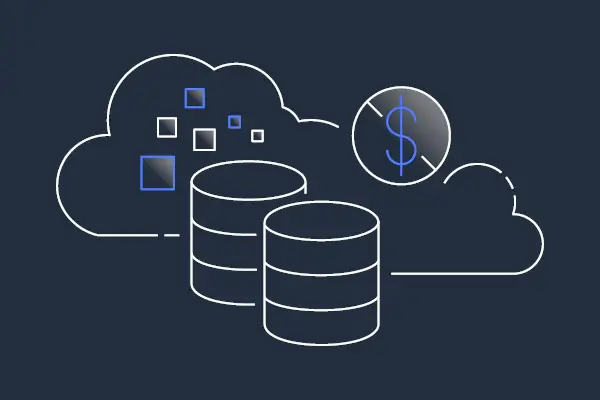· Jay Smith · Articles · 8 min read
Demystifying Enterprise Level IT Engineering Projects
An introduction to AWS CloudFormation and how it enables the automated creation and management of AWS resources through code.

AWS CloudFormation is an infrastructure as code service that provides automation for provisioning AWS resources. It allows you to use templates to repeatably deploy and manage resources in a consistent manner.
Key features:
- Templating - Use YAML/JSON templates to define stacks of resources
- Automation - Provision, update, and delete resources automatically
- Version control - Track template changes like code
- Scaling - Easily replicate stacks across regions/accounts
- Change management - Rollback stacks to previous states
With CloudFormation you can treat your infrastructure like application code. It brings DevOps practices like automation and version control to infrastructure management.
Benefits of Infrastructure as Code
CloudFormation brings many benefits by enabling infrastructure as code for AWS resource provisioning and management.
Rapid Deployment
- Use templates to launch stacks of resources together as a single unit
- Makes deploying complex, multi-tier environments fast and repeatable
- Launch duplicate stacks in different regions/accounts for DR and scaling
Consistency & Compliance
- Templates ensure consistent configuration across stacks
- Codify organizational standards into reusable templates
- Makes it easier to remain compliant and audit environment state
Cost Optimization
- Only pay for the AWS resources you need
- Scale resources up and down via templated stacks
- Destroy entire dev/test environments when not in use
- Avoid resource sprawl and inadvertent costs
Automation
- Automate provisioning, updates, and decommissioning
- Integrate with CI/CD pipelines for rapid deployments
- Reduce manual processes and configuration drift
Change Management
- Version control for infrastructure like application code
- Rollback changes safely to previous stack states
- Achieve immutable infrastructure patterns
Team Collaboration
- Store templates in source control for team collaboration
- Review infrastructure changes via pull requests
- Promote templates across dev, test, staging, and prod
By codifying infrastructure, CloudFormation enables teams to work faster and smarter. The key benefits are increased automation, consistency, cost optimization, and ability to implement change management best practices.
Simplify Infrastructure Management
Managing infrastructure manually can become complex and error-prone as your applications scale. CloudFormation simplifies management using templates and automation.
Simplify Complex Architectures
- Model multi-tier apps with one template (e.g. auto scaling groups, load balancers, databases)
- Template captures dependencies between resources automatically
- Makes changes safe by codifying relationships between components
Standardize Environments
- Enforce standards by reusing approved templates
- Launch standardized dev, test, staging environments
- Ensure production remains consistent and auditable
Simplify Scaling
- Scale environments up or down via template parameters
- Add resources by incrementing counts in templates
- Removes guesswork involved in manual scaling
Streamline Changes
- Update stacks to deploy infrastructure changes
- Change management through file diffs and version control
- Safely test changes via canary deployments
Accelerate Disaster Recovery
- Replicate critical production stacks to other regions
- Recover quickly by launching stacks from templates
- Reduce risk and recovery time in DR scenarios
Free Up Engineers
- Automate manual infrastructure tasks
- Allows engineers to focus on product innovation
- Reduces human configuration errors and drift
By codifying your infrastructure as code, you remove reliance on specialized knowledge. Changes become reviewable, testable, and automatable - making management simpler for everyone.
Quickly Replicate Environments
CloudFormation makes it easy to replicate fully provisioned environments with its templating and automation capabilities.
Development & Testing Environments
- Launch standardized dev and test environments from templates
- Replicate across regions to locate near developers
- Destroy test environments when not in use to save costs
Staging Environments
- Create staging environments identical to production
- Allows testing deployments and infrastructure changes
- Route a percentage of traffic to stage for canary testing
Disaster Recovery (DR)
- Replicate production environment to DR region
- Provides failover capacity in case of outage
- Launch DR stack quickly during crisis
Multi-Region Deployments
- Deploy applications globally from same templates
- Parameterize region-specific settings like AMIs
- Reduce latency by launching in user proximity
Separate Environments
- Dedicated templates for dev, test, stage, prod
- Separates concerns between environments
- Allows customization for each environment’s purpose
Accelerate Onboarding
- Reuse templates to onboard new team members
- Grants environment access and permissions instantly
- Lets new hires start delivering value faster
CloudFormation enables organizations to spend less time and money managing multiple environments. Teams can freely replicate environments for any purpose while maintaining consistency and cost control.
Integrate AWS Services
CloudFormation makes it easy to integrate the many services on AWS to build sophisticated architectures.
Provision Resources Together
- Launch interdependent resources together in a stack
- Template defines relationships between resources
- Services can communicate securely within VPC
Leverage Many Services
- Use virtually any AWS service from CloudFormation
- Provides access to cutting edge capabilities
- Reduce need for custom integration code
Model Multi-Tier Apps
- Create templates modeling complete application architectures
- Include compute, storage, networking, security, and more
- Changes keep architecture consistent and intact
Mix Third-Party Apps
- Integrate third-party and open source tools
- Install software like Docker, Jenkins, etc via templates
- Enables creating fully provisioned environments
Reference Other Stacks
- Break large templates into nested stacks
- Reuse common components like VPCs
- Keep templates focused and maintainable
Group Resources Logically
- Deploy groups of related resources together
- Provides management boundary around components
- Scale groups of resources up and down together
With its broad service integration, CloudFormation serves as a powerful abstraction layer above raw AWS APIs. It enables architects and developers to operate at the architecture level rather than individual resource level.
Manage Infrastructure as Code
CloudFormation enables teams to apply best practices from software development to infrastructure management.
Version Control
- Store templates in source control like application code
- Maintain revisions and branches
- Enable collaboration and pull requests
Change Management
- Rollback stacks safely to any previous state
- Preview changes before updating stacks
- Provides confidence to make updates
Testing & Validation
- Test templates and changes locally before deploying
- Execute automated checks for standards and security
- Treat infrastructure code like an application
Continuous Integration
- Integrate template deployments with CI/CD pipelines
- Launch dev environments for each code commit
- Automated testing before promoting to stage and prod
Code Reviews
- Review infrastructure changes via pull requests
- Discuss and provide feedback on changes
- Ensure standards and compliance
Self-Documenting
- Templates provide documentation on the infrastructure
- Shows relationships between components
- Less reliance on tribal knowledge
Reuse & Customization
- Create base templates for re-use across teams
- Teams build on top of foundations for their apps
- Common standards while allowing customization
With CloudFormation, infrastructure can become easier to change and more reliable to operate. Teams treat it like the software assets it supports.
Optimize Costs
CloudFormation helps optimize AWS costs by enabling automation and scaling of infrastructure.
Avoid Overprovisioning
- Launch only the resources you need
- Add resources incrementally vs overprovisioning upfront
- Destroy dev environments when not in use
Eliminate Drift
- Templates prevent configuration drift over time
- Avoid costs from unused or underutilized resources
- Permissions drift controlled through IAM roles
Rightsize Resources
- Adjust instance types, storage, etc via parameters
- Find optimal balance between cost and performance
- Resize resources as application needs change
Scale on Demand
- Scale resources up and down via template updates
- Add capacity during peaks and reduce during valleys
- Optimizes costs aligned to usage patterns
Automated Decommissioning
- Delete old resources by destroying stacks
- Reduces human errors during decommissioning
- Less abandoned resources and associated costs
Visibility into Spend
- Review template resource counts and usage over time
- Identify trends and optimize underutilized resources
- Understand billing through infrastructure definitions
Tag Resources
- Implement tagging schemas through templates
- Assign cost center tags automatically
- Enables detailed cost allocation and reporting
Treating infrastructure as code unlocks automation capabilities that allow organizations to optimize AWS usage and spending.
Enable Disaster Recovery
CloudFormation provides automation capabilities that can significantly improve an organization’s disaster recovery plans and processes.
Replicate Environments
- Use a template to launch a DR environment
- Keep AMIs, scripts, and data in sync across regions
- Failover traffic in event of outage
Automated DR Testing
- Test DR plan regularly by replicating environments
- Ensure ability to launch critical systems at DR site
- Identify and fix gaps in DR automation
RTO and RPO
- Use templates to architect for optimal RTO and RPO
- Model recovery processes and order of operations
- Codify DR runbooks for execution during crisis
Multi-Region Deployments
- Deploy critical systems to multiple regions
- Provides high availability across geographic regions
- Route traffic to alternate region in outage
Resource Optimization
- Rightsize DR environment for most critical systems
- Balance cost savings with ability to failover
- Bring additional capacity online only when needed
Documentation
- Templates document DR environment and procedures
- Removes reliance on individuals’ knowledge
- Easy to validate and update DR documentation
Automated Notifications
- Integrate notification on DR events into templates
- Critical personnel auto-notified during DR failover
- Reduces human error and delays
CloudFormation gives organizations the ability to codify DR processes just like regular infrastructure. This increases reliability and reduces downtime during outages.
Track Changes
CloudFormation provides native change management capabilities for infrastructure that promotes stability and reliability.
Audit Changes
- Every infrastructure change is tracked as a new template
- Identify when and how a change was introduced
- Restore to previous versions easily
Promote Changes
- Move templates through dev, test, stage before prod
- Gated changes via reviews and approvals
- Minimizes risk of bad changes impacting customers
Rollback Changes
- Rollback stacks to any previous template version
- Fix bad changes by recreating previous state
- Provides confidence to make updates
Visualize Changes
- See changes between template versions visually
- Identify added, updated, and removed resources
- Highlights impact of proposed changes
Restrict Changes
- Use stack policies to block changes to critical resources
- Prevents tampering with configurable parameters
- Lock down templates after successful testing
Decentralize Control
- Grant different teams access to separate stacks
- Allows self-service within team environments
- Reduce bottlenecks for low-risk updates
Integration Testing
- Verify changes across interlinked stacks
- Use stack dependencies to orchestrate testing
- Confirms integration points still work after changes
CloudFormation brings software engineering rigor to infrastructure changes. Teams can confidently make updates while protecting overall stability for customers.
Conclusion
CloudFormation enables you to implement infrastructure as code and realize the benefits of automation, consistency, cost optimization, and change management for your AWS environments.
With its templating model, you can easily replicate and scale environments while maintaining control.
Teams can collaborate on infrastructure like code in source control. And changes become safer by applying software engineering rigor.
By codifying your infrastructure and processes with CloudFormation, you can manage AWS environments efficiently at scale while optimizing for reliability, security, and cost.
Infrastructure becomes easier to provision, modify, and scale. CloudFormation brings IaC best practices to AWS.
Looking for help with your Cloud Infrastructure or other advanced cloud technologies? The IT professionals at God Particle IT Group have the skills and experience to architect, build, and manage complex systems at scale. We specialize in cloud platforms like AWS and can provide enterprise-level support to develop and operate DynamoDB-based applications. Whether you need assistance with design, implementation, optimization, or managed services, contact us to see how we can help. With deep expertise across today’s leading technologies, God Particle IT Group offers responsive, high-touch services to innovate faster.




